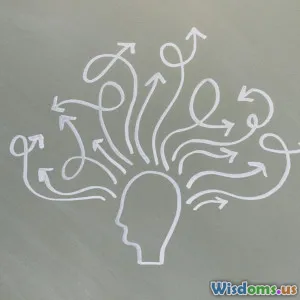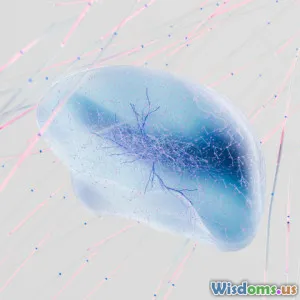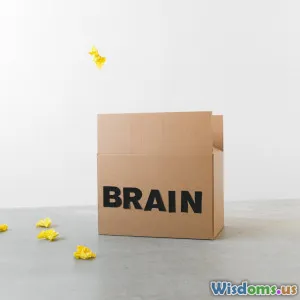
Can You Hack Your Dreams Insights from Neurobiology
9 min read Explore how neurobiology reveals the power to influence and hack your dreams for personal growth and creativity. (0 Reviews)
Can You Hack Your Dreams? Insights from Neurobiology
Dreams have fascinated humanity for millennia—from ancient mystical interpretations to modern psychology’s analytical approaches. Yet, recent advances in neurobiology have begun to unveil the complex mechanisms behind dreams and even suggest that hacking or influencing dreams isn’t just fantasy. Can we truly take control of what happens in our sleeping mind? This article dives deep into the neural foundations of dreams and practical ways to intentionally steer them, opening a new frontier in brain science and personal transformation.
Introduction: The Allure of Controlling Dreams
Imagine falling asleep and deliberately entering a dream where you solve a challenging problem, practice a skill, or enjoy a vivid adventure of your choosing. This ability to manipulate dreams—often dubbed "dream hacking"—has long been the subject of science fiction and occult lore. But what validates and refutes such potent ideas?
Neurobiology provides scientific footing to this curiosity, decoding how the brain generates dreams and revealing pathways that might be leveraged to guide our subconscious narratives. Attention to brain waves, sleep cycles, and the role of memory holds the key.
The Neuroscience Behind Dreams
The Brain's Dream Factory: REM Sleep
The vast majority of vivid dreaming occurs during Rapid Eye Movement (REM) sleep. Discovered in the 1950s, REM sleep is marked by high brain activity resembling wakefulness, rapid eye movements, and muscle atonia (temporary paralysis). During this stage, the brain’s limbic system—the emotion and memory hub—is highly active, while the prefrontal cortex, responsible for logical reasoning, dims down.
This imbalance explains why dreams often feel emotional, illogical, and bizarre. Neuroimaging studies show increased activity in the amygdala and hippocampus during REM sleep, facilitating intense emotional impressions and memory associations.
Neural Circuitry and Neurochemistry
Dopamine, acetylcholine, serotonin, and noradrenaline levels fluctuate dramatically during different sleep stages, influencing dream vividness and recall. For example, increased acetylcholine activity during REM enhances cortical arousal and vivid visual experiences.
Meanwhile, the dorsolateral prefrontal cortex's decreased activity explains why critical thought, self-reflection, and awareness diminish in typical dreams—a major obstacle to consciously controlling dreams.
Can You Truly Hack Your Dreams?
What is Dream Hacking?
Dream hacking refers to intentional interventions aiming to influence dream content, recall, or lucidity. It includes:
- Lucid dreaming: Becoming aware inside the dream that you are dreaming.
- Targeted dream incubation: Influencing dream themes by suggestion or stimuli before sleep.
- Neuromodulation: Using devices or chemicals to alter sleep physiology.
Lucid Dreaming: The Gateway to Dream Control
Lucid dreaming is the clearest form of dream hacking. Neurobiological research shows that lucid dreams activate the prefrontal cortex, reinstating meta-awareness during REM sleep. Techniques to induce lucid dreams include:
- Reality testing (checking environment during the day to form a habit)
- Mnemonic induction (telling yourself to notice when you’re dreaming)
- Wake back to bed (brief waking before re-entering REM)
A landmark 2014 study using EEG and fMRI confirmed that lucid dreamers display unique brain patterns not seen in non-lucid REM, effectively bridging logical and subconscious brain regions.
Dream Incubation and Memory Consolidation
Neurobiology also supports using "dream incubation"—pre-sleep intention setting or exposure to stimuli—for influencing dream content. For example, studies have shown that participants exposed to images or auditory cues before sleep reported related dream themes more frequently.
Further, the hippocampus consolidates waking experiences into long-term memory during sleep; thus, daily experiences and learning heavily influence one’s dream narratives. Harnessing this mechanism, you can choose to focus on solving a problem or practicing a skill before sleep to prime related dreams.
Technological Neuromodulation: The Frontier of Dream Hack
Emerging tools like transcranial alternating current stimulation (tACS) or transcranial direct current stimulation (tDCS) aim to enhance or induce lucid dreams by stimulating the prefrontal cortex. Early trials suggest these devices can increase lucid dream incidence slightly.
Additionally, devices that detect REM onset and deliver sensory cues (like light or sound) may trigger lucidity without waking the sleeper. These methods are still experimental but highlight future possibilities for purposeful dream engagement.
Practical Applications of Dream Hacking
Enhancing Creativity and Problem Solving
Dreams incubate creative insights by blending memories in novel ways. A famous example involves the chemist August Kekulé, who dreamt of a snake biting its own tail—the benzene ring’s structure—after struggling to conceptualize its shape.
Intentionally priming problems or creative projects before sleep can increase the likelihood of dreaming about solutions. Dream hacking taps into this potent internal creativity wellspring.
Therapeutic Potential
Lucid dreaming has been explored clinically to alleviate nightmares in PTSD patients by allowing conscious interaction and control within distressing dreams.
Cognitive-behavioral therapy adjuncts focusing on sleep hygiene and dream rehearsal utilize dream hacking principles to reshape negative or traumatic dream content.
Skill Enhancement and Rehearsal
Research indicates that mental rehearsal in dreams can enhance physical skill learning. For example, athletes and musicians who focus on practicing specific actions during the day may dream of those activities, accelerating mastery.
Limitations and Ethical Considerations
Incomplete Control and Brain Complexity
Dream hacking is not absolute control; neurobiology shows dreams remain highly unpredictable due to dynamic brain chemistry and multiple subcortical influences. Factors like stress, medications, and sleep quality affect dream content and recall.
Ethical Aspects
Manipulating dreams raises questions, especially as neuromodulation technology advances. Ensuring safe applications, informed consent, and privacy safeguards are critical areas needing discourse.
Conclusion: The Dreamscape as the Next Frontier
Neurobiology reveals that while hacking dreams isn’t as simple as flipping a switch, there are reliable ways—like lucid dreaming and dream incubation—to exert influence. Our brain’s nocturnal symphony is complex but ripe with opportunity for creativity, healing, and self-understanding.
Advancements in brain imaging and neurotechnology promise exciting future avenues to safely deepen our relationship with dreams. As research evolves, hacking dreams could become a dynamic tool for personal growth and unlocking the vast potentials of the subconscious mind.
The age-old dream of taking command of our dreams is no longer fantasy but an emerging scientific reality—one synapse, one REM cycle at a time.
References:
- Voss, U., et al. (2014). "Lucid dreaming: a state of consciousness with features of both waking and non-lucid dreaming." Sleep, 37(9), 1439-1450.
- Stickgold, R. (2005). "Sleep-dependent memory consolidation." Nature, 437, 1272-1278.
- LaBerge, S. (1985). "Lucid Dreaming." Psychology Today.
- Erlacher, D., & Schredl, M. (2010). "Practicing a motor skill in a lucid dream enhances subsequent performance." Sleep, 33(4), 456-464.
- Hobson, J.A., Pace-Schott, E.F., & Stickgold, R. (2000). "Dreaming and the brain: towards a cognitive neuroscience of conscious states." Behavioral and Brain Sciences, 23(6), 793-842.
Explore how to tap into this fascinating union of neuroscience and human experience, and start your journey toward hacking your own dreams.
Rate the Post
User Reviews
Popular Posts



















